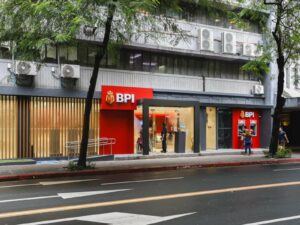Reinforcing its position as a leader in sustainable banking, the Bank of the Philippine Islands (BPI) has become the first bank in the Philippines to adopt the Retail Aggregation Program (RAP), transitioning 70 of its branches to renewable energy through a strategic partnership with ACEN Renewable Energy Solutions (ACEN RES).
Spearheaded by the Department of Energy, the RAP enables multiple electricity end-users to combine their power requirements to reach the 500-kilowatt threshold needed to directly negotiate energy supply contracts with licensed retail electricity suppliers. The program fosters competitive pricing and gives businesses the flexibility to choose renewable energy sources.
“We are proud to mark another milestone for BPI as the first bank in the Philippines to access the Retail Aggregation Program. This initiative reinforces our long-standing commitment to sustainability and innovation, from being pioneers in sustainable financing as early as 2008 to securing EDGE certifications for our branches,” said Eric Luchangco, BPI Chief Finance Officer and Chief Sustainability Officer.
“Our partnership with ACEN RES, along with the support of key stakeholders, enables us to lead by example in the transition to renewable energy. This is not just a one-time achievement, but another step forward in our journey toward building a more sustainable and inclusive Philippines,” Luchangco added.
Measurable impact on sustainability
Further advancing its green operations, BPI will be shifting its Binondo Corporate Office in Manila to renewable energy through the Green Energy Option Program (GEOP)—a government initiative that allows end-users with a monthly average peak demand of at least 100 kW to source electricity exclusively from renewable sources. The Binondo office will be the fourth BPI corporate building to fully transition to clean energy, following BPI Buendia Center, BPI Consumer Center, and BPI Operations Center.
BPI’s adoption of RAP will cover approximately 263,000 kWh per month for 70 branches, while the Bank’s adoption of GEOP will supply around 110,000 kWh per month for the Binondo office. Combined, these programs are projected to reduce carbon emissions by 172.3 metric tons each month—on top of the 515 metric tons of carbon emissions reduced from 786,294 kWh per month already sourced from renewable energy by BPI’s three other green-powered offices.
Scaling up green operations
Looking ahead, BPI plans to expand its use of renewable energy across more branches and facilities, aiming to convert to renewable use all eligible sites under either the RAP or GEOP. This expansion is a key component of BPI’s roadmap toward fully sustainable operations, all in support of its mission to help build a better Philippines—one family, one community at a time.
Spotlight is BusinessWorld’s sponsored section that allows advertisers to amplify their brand and connect with BusinessWorld’s audience by publishing their stories on the BusinessWorld Web site. For more information, send an email to online@bworldonline.com.
Join us on Viber at https://bit.ly/3hv6bLA to get more updates and subscribe to BusinessWorld’s titles and get exclusive content through www.bworld-x.com.
